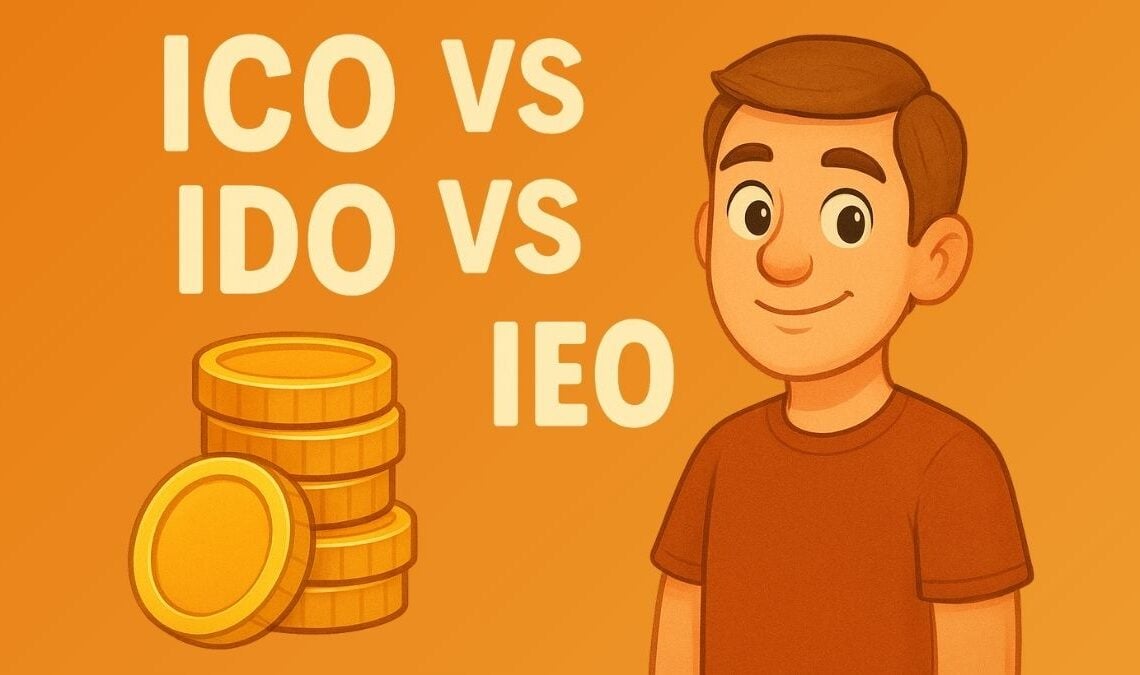Crypto fundraising has evolved dramatically since the ICO craze of 2017. Today, projects looking to raise capital have several options—each with different levels of risk, regulation, and exposure. The three most common models are the ICO (Initial Coin Offering), IEO (Initial Exchange Offering), and IDO (Initial DEX Offering).
If you’re new to the space or planning to invest in early-stage tokens, understanding how these models work is essential. Here’s a clear breakdown of what each one means in 2025—and how to navigate this rapidly growing world of decentralized finance.
What Is an ICO (Initial Coin Offering)?
An ICO is the original model of crypto fundraising. In this setup, projects sell their native tokens directly to the public, usually through their website. Investors send ETH, BTC, or stablecoins in exchange for the new token.
This model gives developers full control—but also full responsibility. Since anyone can launch an ICO, scams and rug pulls were widespread in the past. Still, it remains a valid route for teams who want complete autonomy and don’t want to rely on exchanges.
✅ Pros:
- Full control over tokenomics and launch
- No middlemen or platform fees
- Global investor reach
⚠️ Cons:
- High regulatory risk
- Investors must vet the project themselves
- Reputation and transparency are critical
What Is an IEO (Initial Exchange Offering)?
An IEO is hosted by a centralized crypto exchange. Instead of launching on their own, the project partners with the exchange, which vets it, manages the sale, and distributes tokens to users through its platform.
IEOs gained popularity for offering a more secure, compliant way to launch tokens. The exchange acts as a gatekeeper, which boosts trust among users.
✅ Pros:
- Added legitimacy from exchange vetting
- Built-in audience of KYC-verified users
- Tokens often listed immediately after the sale
⚠️ Cons:
- High listing and marketing costs
- Less control over timing and process
- Still subject to regulatory pressure
What Is an IDO (Initial DEX Offering)?
An IDO is a decentralized fundraising method where tokens are launched directly on a DEX (Decentralized Exchange), like Uniswap or PancakeSwap. The process is permissionless, fast, and governed by smart contracts.
This model aligns with DeFi values and offers near-instant liquidity. However, without centralized oversight, the barrier to entry is low—which means the quality of projects can vary significantly.
✅ Pros:
- Permissionless and decentralized
- Instant liquidity through DEX pools
- Lower launch costs
⚠️ Cons:
- Less due diligence required
- Vulnerable to bots, front-running, and scam tokens
- Smart contract risks
ICO vs IEO vs IDO – Quick Comparison Table
| Feature | ICO | IEO | IDO |
| Platform | Project’s website | Centralized exchange | Decentralized exchange |
| Trust Level | Depends on project | Vetted by exchange | Transparent but risky |
| Investor Access | Open to all | Requires KYC | Permissionless |
| Liquidity | Post-sale listing needed | Often immediate | Instant via liquidity pools |
| Cost for Projects | Low (self-marketing) | High (listing/marketing fees) | Low (DEX fees only) |
| Regulatory Exposure | High | Medium | Varies (depends on region) |
Final Thoughts: Choosing the Right Crypto Fundraising Model
Each fundraising model serves a different purpose. ICOs offer flexibility but come with major risks. IEOs prioritize safety and visibility—at a higher cost. IDOs align with the open ethos of Web3 but lack institutional safeguards.
As crypto fundraising continues to mature in 2025, investors and builders alike must weigh speed, control, exposure, and security. Whether you’re joining a token sale or launching your own project, knowing how these models work is the first step toward smarter decision-making in the decentralized economy.










